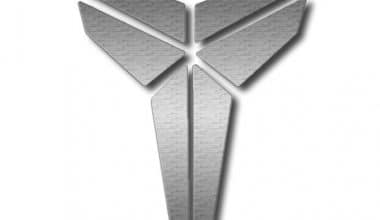Displaying such a sign at the school clearly indicates the church’s patronage. But within the organization’s physical space, they find their way through the huge ocean of information by pointing toward the north star. The logo for Notre Dame University exudes order and harmony in equal measure. The Fighting Irish Leprechaun is the mascot of the University of Notre Dame’s athletics department. The main Notre Dame logo is made up of the letters “N” and “D” twisted around each other. In addition to the Notre Dame logo, there is also a living student representation of the mascot, which is what gives it its distinctive quality.
The History of Notre Dame
The Cathedral of Notre Dame in Paris is usually known simply as Notre Dame. It stands out as the largest and oldest Gothic cathedral from the Middle Ages and is also of architectural interest.
But Notre Dame was built on the foundations of two churches that were built on the remains of a Gallo-Roman temple to Jupiter. It is on the easternmost tip of the Île de la Cité. Around 1160, Bishop Maurice de Sully of Paris used the ruins of two ancient basilicas to build the cathedral. Pope Alexander III laid the foundation stone in 1163, and the high altar was sacred in 1189. By 1250, the main structure was complete with a choir, western facade, and nave. The rest of the building, including the chapels and porches, took another hundred years to finish.
Furthermore, the main body of Notre Dame Cathedral includes the choir and apse, a brief transept, and a nave with double aisles and square chapels on either side. In the 18th century, the building’s original central spire was taken down because of safety concerns. It was not until the 19th century that the building got a new one. However, the floor plan of the cathedral is 427 ft by 157 ft (130 m by 48 m), and the ceiling is 115 ft (35 m) high.
Notre Dame History Continues
The western front has two large early Gothic towers (1210–50), a three-story design, doors with beautiful early Gothic sculptures, and a row of statues of Old Testament rulers. Each tower is 68 meters (nearly 223 feet) tall, but neither has its original spire. The apse is at the east end of the cathedral. It contains enormous clerestory windows between 1235 and 1270 and single-arch flying buttresses typical of the Rayonnant Gothic style.
Only the cathedral’s three big flower windows have their original 1300s glass. Notre Dame Cathedral has suffered from inadequate preservation and destruction throughout the years.
Napoleon, who crowned himself emperor of France in the cathedral in 1804, saved it from destruction after the French Revolution. In the middle of the 19th century, the French architect Eugène-Emmanuel Viollet-le-Duc made a lot of changes to Notre Dame. There’s a rumor that Victor Hugo’s work Notre Dame de Paris (1831), set in the cathedral, pays for the renovations. A large fire broke out in the cathedral’s attic in 2019 during restoration efforts, destroying most of the roof, the spire designed by Viollet-le-Duc in the 19th century, and some of the rib vaulting.
Notre Dame Logo Overview
Since 1842, Notre Dame has been a well-known school with a long tradition of academic excellence. It is run by the Catholic Church but welcomes students of any background, creed, or nationality. The campus of a college or university usually has a lot of interesting places and things to do. Beautiful landscaping complements the multiple classrooms, offices, dorms, and dining halls that make this campus one of the best in the country. In addition, the university’s varsity sports team, the Notre Dame Fighting Irish, needs a sports complex.
- Established on November 26th, 1842
- Edward Sorin, Founder
- Headquarters: Notre Dame, Indiana, United States
Notre Dame Logo Meaning and History
Medieval scholars based their new school on an existing structure, a log chapel. Under Edward Sorin’s direction, it expanded and became more prestigious over time. After that, the leaders of Notre Dame made changes to the school and started a new era of more modern ways of teaching. The institution’s goal, as it always has been, is to be at the forefront of academic inquiry. At the same time, he supports building projects that aim to add more buildings to the city.
The Notre Dame corporate logo shows both the school’s spirit and its long history. But the Notre Dame logo looks like a seal and has a shield in the shape of a triangle with certain symbols on it. In the middle is the Congregation, which is the most important part of the Sancta Cruce community. This group started Notre Dame University so that more people in the United States would know about its religious beliefs. Additionally, the Notre Dame logo of the cross represents the universal Catholic Church.
Mary has the title of “Star of the Sea” back in ancient times. A six-pointed star in the top left corner of the shield shows this. An open book covers the cross’s foundation. It shows how the university’s main goal is to improve human knowledge through research and the sharing of the results of that research. Here it reads: “VITA DUL-CEDO SPES.” Also, the second line of the Salve Regina anthem serves as the university’s motto in Latin. He considers Mary to be “Life, Sweetness, and Hope,” and he has devoted his life to her.
In addition, two curved lines indicate Notre Dame du Lac. Both lakes are on campus. In blue is “SIGILLUM UNIVERSITAS DOMINAE NOSTRAE A LACU” on a circular shield.
Old Notre Dame Logo
From the 1920s to 1966, Notre Dame’s official logo was a live Irish terrier. During this time, the leprechaun was the unofficial mascot. During this time, terriers came and went in rapid succession. However, almost all of them went by Mike or Clashmore Mike. The student dressed as the fighting Irish leprechaun would take the dog for a lap around the stadium field during timeouts during football games.
The Fighting Irish logo of Notre Dame
The school actively participates in and supports a wide variety of NCAA men’s and women’s sports. These include volleyball, tennis, diving, softball, football, lacrosse, golf, fencing, ice hockey, golf, and baseball.
In this instance, teams will use the “DN” monogram. While the department itself dates back to 1842, the current iteration dates only to 1964.
Superimposed on each other, the blue letters “N” and “D” blend together at four locations. Large, square serifs adorn their edges. This is a nod to the classic fonts used in earlier iterations of the Notre Dame logo. For a classic touch, the two right-hand corners of the letter “D” are rounded off.
Notre Dame Logo Font Type and Color Scheme
The most noticeable part of Notre Dame’s look is the shield with the logo that represents the school’s traditions and values. But most of the Notre Dame logo’s design elements (a cross, a star, and a Latin motto) show that the school is religious. The seal features the shield, a graphic element of the academic symbol.
The logo represents the Notre Dame Fighting Irish sports team, not the university as a whole. However, the interlocking “DN” letters show how spiritually united we are as a team, as fans, as graduates, and as current students. It inspires victory because it represents solidarity and mutual backing.
Adobe Garamond is the recommended and approved font for classroom use. It is simultaneously contemporary and classic in design. All of the Notre Dame logo typography is in this font, which features thin, short serifs.
The spread of the book and the inscription inside the ring are both white. The rest of the building features the traditional gold and dark blue of the school. In addition, the Notre Dame logo for the sports team is similarly a deep blue color.
Why Is Notre Dame Blue and Gold?
Gold and blue have been Notre Dame’s official sports colors for a long time, but the color of the Irish home football shirt has changed between the two for well over 50 years.
But the practice of calling certain colors “intellectual” has been around since the beginning of the school. When Notre Dame University was founded in 1842, the colors yellow (for the sun) and blue (for the truth) were chosen as their official colors. After the school’s dome and a statue of Mary were gilt, gold and blue became the official colors of the institution.
The 1984 season was the final time the Irish would wear a different color for home games; navy blue had been the uniform of choice during the Ara Parseghian and early Dan Devine eras. There were no adjustments to the Irish pants or helmets for the gold celebration.
Gerry Faust took over as coach of the Fighting Irish in 1981, and the team adopted a new uniform with royal blue jerseys with three one-inch stripes on the sleeves: two gold ones and one white one. As a result, the ’84 tops were entirely plain, but for the white numerals on navy blue shirts. Starting in 1986, Lou Holtz had the interlocking Notre Dame insignia added to the shoulder of the jerseys and the left front side of the pants.
Why Is Notre Dame Irish and Not French?
Some people have taken Notre Dame’s “Fighting Irish” moniker to be an insult to Irish people, although they are simply unaware of the reality. Quite the contrary is true, in fact. The name “Fighting Irish” for Notre Dame’s football team is a reference to the school’s longstanding affinity with the Irish people.
So, how did Notre Dame’s sports teams earn the reputation as the legendary Fighting Irish?. The University of Notre Dame has a long and storied tradition of honoring and celebrating its ties to Ireland and the Irish people, and the school’s iconic nickname reflects this commitment.
On November 26, 1842, the French priest Edward Sorin and five other religious from the United States and Ireland founded Notre Dame. Irish students have long made up a sizable portion of the student body. Most of Father Sorin’s replacements as president of Notre Dame have been Irish. Nonetheless, ties between the Irish and Notre Dame go back much further in time.
Interesting Facts About Notre Dame
Notre Dame de Paris, which was in existence during the 12th and 14th centuries, embodies centuries of French history. The Gothic cathedral’s scars from the French Revolution are memories of its long link with the monarchy, a tie that nearly culminated in its demolition, reflecting Paris’s major status as an economic and spiritual hub in the 12th century. Every day, thousands of tourists come to its doors to take pictures of its famous rose windows and flying buttresses.
However, the cathedral’s distinctive spire and much of the roof were destroyed in a fire on April 15, 2019. After the spire fell, firemen worked desperately to put out the fire. No one knows what caused the problem, but it may have had something to do with the renovations that were going on at the time. Here are some fascinating facts about the Notre Dame
#1. There Is a Special Significance to the Site on Which the Cathedral Stands
The iconic Notre Dame de Paris sits on the Île de la Cité (City Island) in the heart of the French capital. The Île de la Cité would feel very different if Notre Dame Cathedral weren’t there. This Gothic masterpiece seems to have been here forever, and it is just as spectacular today as it was when it was set in the 12th century.
On the other hand, the Île de la Cité predates the Cathedral. After the Roman victory at the Battle of Lutetia (52 BC), the new Gallo-Roman city of Lutetia was established and grew on the Left Bank and the Île de la Cité. In the current area of the Left Bank’s Rue Saint-Jacques, you’ll find the most frequented and well-known districts in the city.
Since its inception, the Île de la Cité has been partitioned in half along its length: the western half is devoted to city affairs and houses the places where the rulers can stay during their travels to Lutetia, while the eastern half is devoted to prayer and hosts various altars (at least, if not temples – this remains unclear).
This partition of the island has persisted through the ages, with one half serving as the center of government and law and the other as a place of worship. Following the destruction of the Roman Palace, the Royal Palace was set to serve as a new seat of government. Those pagan shrines turn into Christian churches. In order to construct Notre Dame Cathedral, these churches had to be down.
#2. The Bells at the Cathedral Seem to Be Acting On Their Own
The bells of Notre Dame have names, as is customary in cathedrals. Marie, Emmanuel, Gabriel, Anne-Geneviève, Denis, Marcel, Etienne, Benoit-Joseph, Maurice, and Jean-Marie are among Notre Dame’s most illustrious.
However, the turbulent histories of these bells are far more intriguing. The two to three-ton bronze pieces must have a life of their own if Victor Hugo’s famous hunchback, Quasimodo, who ring the bells of the gorgeous cathedral, was fictional. The bells we hear today were not struck by the Cathedral 600 years ago.
Also, during the French Revolution in 1791, many of Notre Dame’s bells were taken down and melted down to make cannons. At some point in the middle of the nineteenth century, more bells were set. There was a special ring to these bells that boomed across the French capital for the following 150 years.
#3. In the French Revolution, Twenty-Eight of Its Kings Were Killed
In 1793, when the French Revolution was at its worst, a group of people took 28 statues of biblical kings and cut off their heads. Following the assassination of King Louis XVI earlier that year, emblems of the monarchy were easy targets. The Interior Minister said that the broken stones should be used in building projects instead of being thrown away. 21 monarchs’ heads remained lost until 1977 when they were found in the French Bank of Foreign Trade’s basement. They have since moved to the adjacent Musée de Cluny.
#4. Historically, Its Bells Were Melted Down to Make Artillery
Both the cathedral and the royal apartments at Notre Dame were down during the French Revolution. At the end of the 18th century, many cathedrals in France went from being Christian to being Cult of Reason. The 20 bells were stolen and melted down, except for Emmanuel, a 1681 bourdon.
In the 1800s, Notre Dame’s new bells were not as well-crafted as the ancient ones and emitted a discordant sound. When new bells were installed in 2013, the cathedral rang with the 17th-century chime, with Emmanuel joining on exceptional occasions.
#5. The Cathedral Inspired Some Songs
The legendary French singer Édith Piaf was as taken with Notre Dame Cathedral as Victor Hugo had been. Her rendition of “Notre Dame de Paris” was one of her many chart-topping singles.
“Notre Dame de Paris” discusses the cathedral’s aesthetic worth, construction, history, and future role in Parisian culture. She sings about the cathedral as a metaphor for herself; both have a complicated past and a bright future.
#6. The Creatures in It Are Not From the Middle Ages
The cathedral’s carved gargoyles and chimera (which aren’t used as waterspouts) feature prominently in many iconic photographs of Notre Dame. The odd creatures you see in the cathedral today were added between 1843 and 1864 by Eugène-Emmanuel Viollet-le-Duc. Most tourists today would never guess that.
In attribute, Hugo’s descriptions of the gargoyles at Notre Dame de Paris are in attribute to inspiring Viollet-le-Historical Duc’s designs for the cathedral. Before the refurbishment, a daguerreotype of the building displays a more austere structure. The medieval gargoyles that once adorned its towers have been removed. Also, many gargoyles from the 19th century were in such bad shape that they had to be taken down and replaced with PVC pipes for safety reasons.
The gargoyles weren’t even Viollet-le-most Duc’s outlandish embellishments. Around his new tower were statues of the 12 apostles, including himself as Saint Thomas.
#7. Within the Cathedral, a Rooster Guards a Fragment of the Crown of Thorns Worn by Jesus
Even if you ignore the gargoyles, the literary history, and the popular depictions, the rooster on top of Notre Dame Cathedral’s highest spire is one of the most recognizable parts of the building. However, this strange bird may appear out of place at first, but it serves as a spiritual lightning rod to defend the cathedral’s congregation from outside forces.
#8. A Fire Destroyed the Iconic Spire and Roof of the Cathedral in 2019
The church’s “flèche,” or spire, was even higher than the rest of the structure since it was situated atop the transept. Also constructed in the 13th century, the spire was taken down in 1786 and replaced with a new one made of oak and lead in the late 19th century. As the fire spread in April 2019, it regrettably destroyed this great Gothic feature of the church, which had stood at a height of 91.44 meters (300.0 ft).
#9. The Cathedral Is 856 Years Old
It was constructed in about 1160 when the cathedral was still in its infancy. Because of its exceptional longevity, it was in remarkably good form just before the fire.
Furthermore, the cathedral is around 856 years old and has endured war after battle without being damaged or destroyed. It’s interesting that the fire happened now when things are relatively calm after the chaos of the French Revolution and World Wars. Its high spire and vaulted ceilings made it an instant classic in the development of Gothic architecture at the time.
#10. All Roads Lead to Notre Dame de Paris
A tiny bronze star with eight points is set into the cobblestones in the shape of a circle, but it is easily lost among the throngs of sightseers bustling about the base of Notre Dame. Inscribed on it is “Point zéro des routes de France,” and it serves as the starting point for all distance calculations between Paris and any other French city. It was installed there in 1924 but was moved briefly in the 1960s so that an underground parking structure could be built. Workers stopped these plans when they found parts of buildings that are now being kept in the archaeological crypt.
Why Is Notre Dame’s, Mascot Irish?
Father Matthew Walsh, the president of the university and a native of Ireland, officially took the name “Fighting Irish” in 1927. According to Notre Dame, the leprechaun is a jokey symbol of the Fighting Irish.
According to Notre Dame, the leprechaun was first used in England as an insulting way to talk about Irish people. The school said that the Irish-American community, which includes students at Notre Dame, “has turned back on former oppressors again as a sign of celebration and victory.” High fists and the word “fighting” on the leprechaun mascot are supposed to celebrate the perseverance of the Irish and, by extension, the university’s athletes.
Do You Have to Be Catholic to Go to Notre Dame?
To be clear, we are a Catholic group, but we really appreciate and respect the many members of other religions who are also members of our organization. Notre Dame is one of the most welcoming places to worship in the country because our Campus Ministry hosts masses, faith-sharing groups, and retreats for people of all faiths.
Why Is It Called Fighting Irish?
During the Civil War, Irish immigrants who were soldiers fought for the Union. Three New York regiments made up what became known as the Irish Brigade. This group became known as the Fighting Irish. Joyce Kilmer’s poetry serves as a lasting tribute to their courage.
Another link between the Fighting Irish and Notre Dame was established in May 1924. In his book Notre Dame and the Klan, historian Todd Tucker says that in the spring of 1969, students from the University of Notre Dame and anti-Catholic Ku Klux Klan protesters got into a violent fight in South Bend. It’s obvious that the school had a sizable Irish student population that took pride in living up to the name “the Fighting Irish.”
Why Do Irish Towns Start With “Bally”?
The Irish place name prefix Bally comes from the Gaelic ‘Baile na,’ which literally translates to “place of.” However, “town of” is not a proper translation of the preposition because there were so few towns in Ireland when these names were first in existence. Also, Ballyjamesduff (county Cavan), Ballymoney (County Antrim), and a lot of other places (county Londonderry). Dublin’s original Irish name was Baile thar Cliath, which would be anglicized to something like “Ballycleeagh” in English. However, keep in mind that the name “Dublin” is of Viking origin.
Also, read IRISH BEER BRANDS: Best 13+ Non-Guinness Irish Beer Brands in America
Is the Notre Dame logo a Leprechaun?
The Leprechaun is home to the official athletics website for the Notre Dame Fighting Irish. Leprechauns play an important role in Irish folklore, and hence Notre Dame has chosen them as their mascot. The Fighting Irish is the school’s nickname. The warrior of the Notre Dame emblem is depicted from the side with his arms raised as if he is prepared to do battle with anyone who stands in his way.
Who Does the Leprechaun Represent?
- Lucky Symbols
According to the legend, if you manage to catch one of these mischievous critters, you will not only be granted three wishes, but also a little measure of good fortune. Because of this, they have become synonymous with the “luck of the Irish,” which is one of the reasons they continue to enjoy such widespread popularity in modern times.
Are Leprechauns Evil or Good?
According to David Russell McAnally, the leprechaun is “neither totally good nor wholly wicked” and is the son of an “evil spirit” and a “degenerate fairy.” Leprechauns are said to live in Ireland.
Conclusion
The Notre Dame logo has been criticized for offending certain people and ignoring other cultures. For instance, “hostile ethnic mascots or iconography” are forbidden per NCAA regulations. Many companies have had to rebrand because of this rule. The Notre Dame Leprechaun logo appears forceful and ethnic, stereotyping an entire nation in a single figure.
Similar Posts
- PUZZLE BRANDS: 2023 Top Best Puzzle Brands for Kids & Adults
- Floyd Mayweather’s Net Worth: Business Models to Inspire You!!!
- ALCOHOL BRANDS: Top 21 Brands in the World, Updated!
- Konga Yakata: Top deals in 2023






